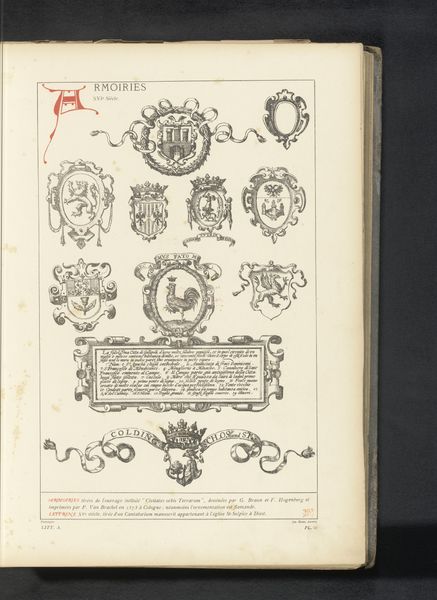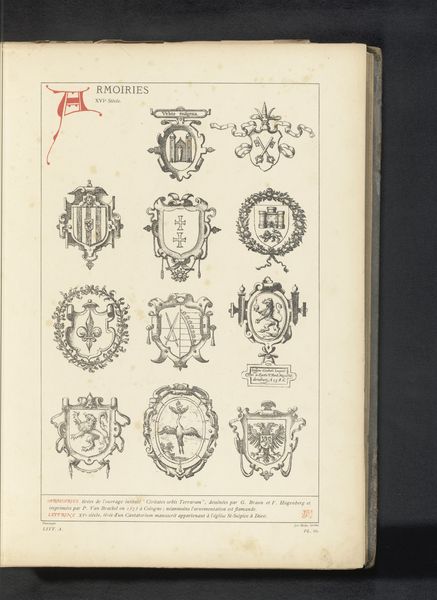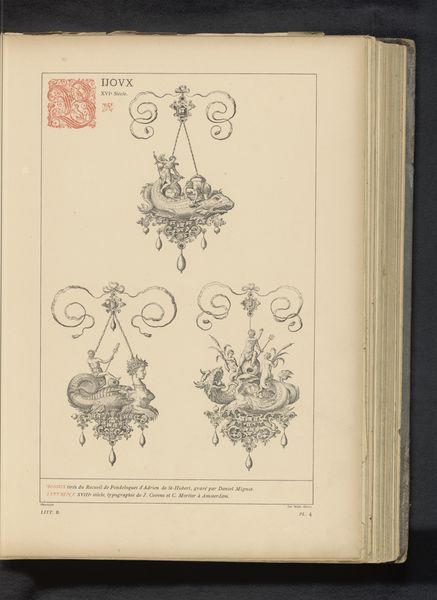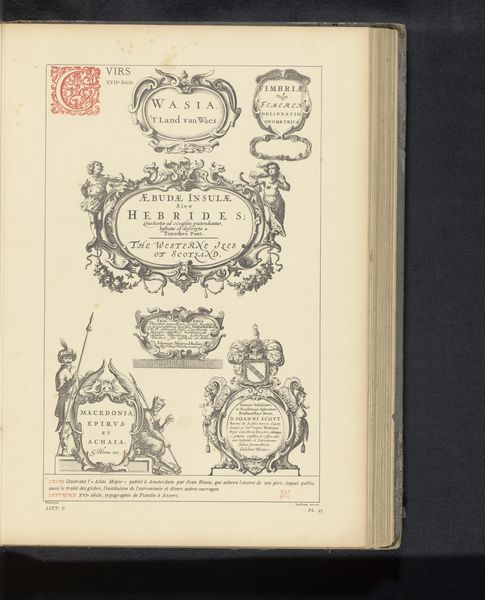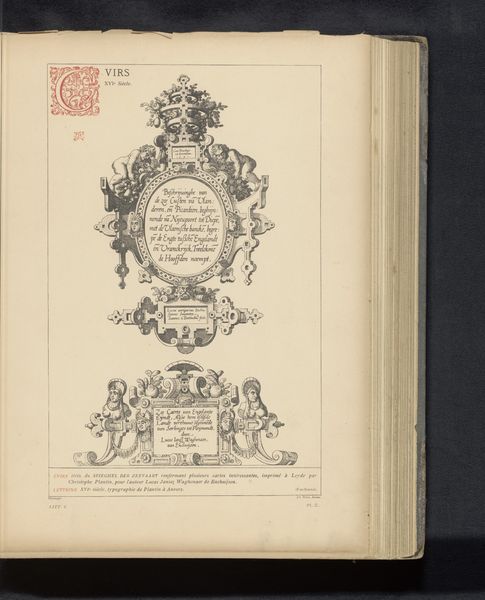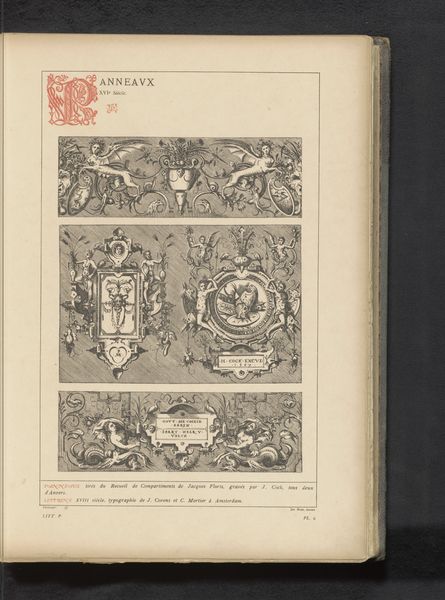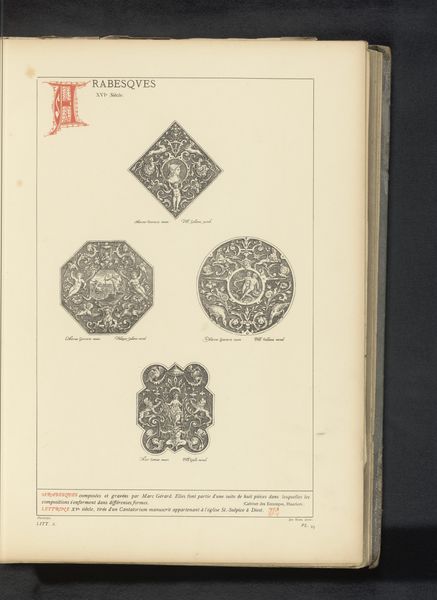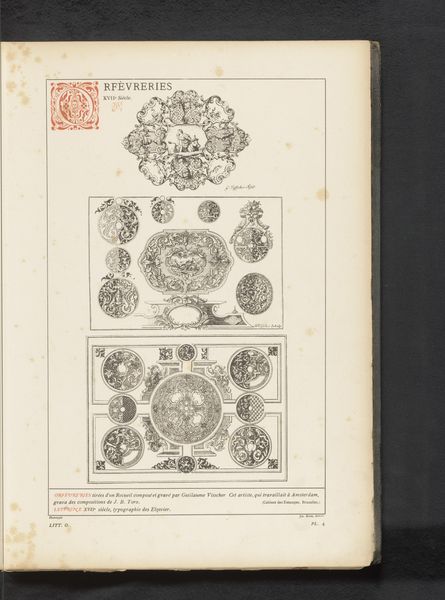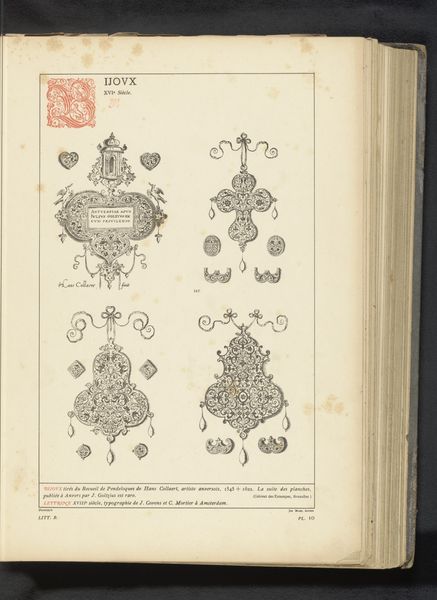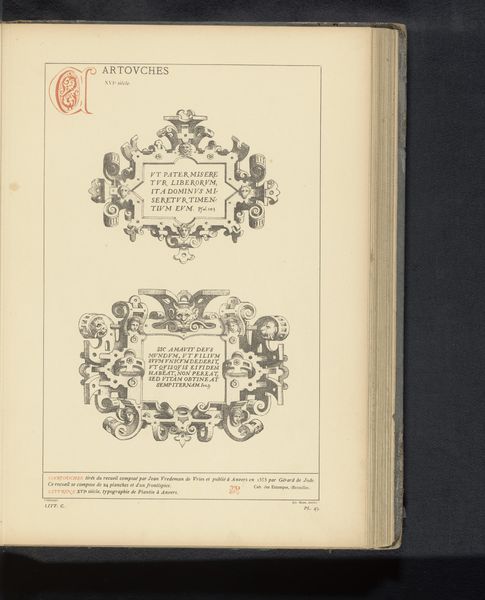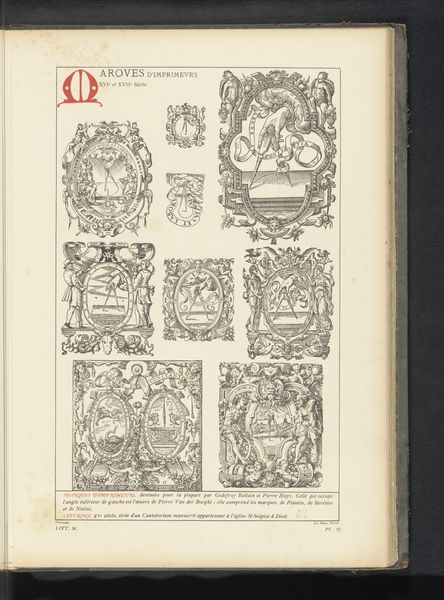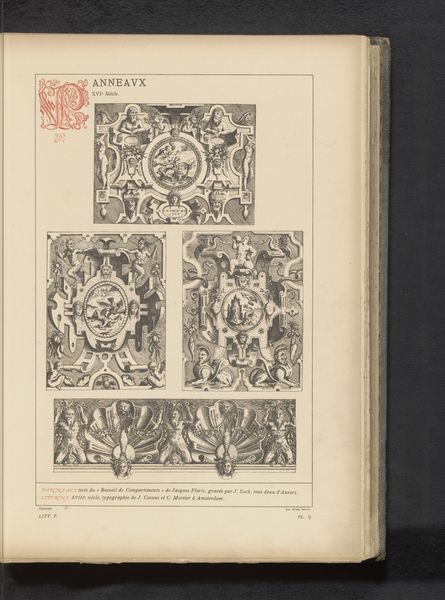
Reproductie van een ontwerp met zeven wapenschilden uit een atlas van Joan Blaeu before 1880
0:00
0:00
Dimensions: height 344 mm, width 231 mm
Copyright: Rijks Museum: Open Domain
Curator: At first glance, these heraldic designs appear quite imposing, a real display of authority, would you agree? Editor: Absolutely. There's a certain gravitas conveyed, despite being rendered on paper. They evoke power, lineage, and… I don't know, almost a theatrical quality with their ornate embellishments. Curator: Let's unpack that theatricality. What we're looking at here is "Reproductie van een ontwerp met zeven wapenschilden uit een atlas van Joan Blaeu," dating to before 1880. These are engravings, and most likely reproductions, of designs by the famous cartographer Joan Blaeu from his atlas. The shields display Baroque characteristics, which speaks volumes. Editor: Ah, Baroque! So, grandeur and symbolism are par for the course. Each emblem tells a story, a condensed history. Are we seeing real political entities represented, or something more allegorical? Curator: There's definitely political weight here. Notice the central, larger shield. The inscription states ‘Svecia, Dania et Norvegia,’ and includes images of royal crowns with heraldic animals like lions, eagles, and some that might be griffins or other mythical creatures. This is the visual language of empire. These are not merely pretty patterns; they assert dominance and cultural identity. Editor: Right. So the lion isn't just a lion—it's courage, royalty, strength. And the crown, that's not just a decorative topping. The careful engraving must have taken great care, each line defining that symbolic meaning to maintain proper social hierarchy and memory. Curator: Precisely! Consider, too, how these emblems functioned in the public sphere. Placed on buildings, documents, even personal possessions, constantly broadcasting the power and authority of the families, states and institutions. A kind of ubiquitous propaganda in its time. Editor: Yes! And how a knowledge of heraldry was a kind of cultural capital. Being able to "read" these symbols meant participating in a particular discourse, solidifying existing social orders. Fascinating how a drawing on paper can encapsulate all that. Curator: Agreed. Examining these armorial designs gives you a unique entry point into early modern Europe, where power, identity, and artistry converged. They resonate even today with an enduring weight. Editor: Yes, a dense concentration of history in very contained images.
Comments
No comments
Be the first to comment and join the conversation on the ultimate creative platform.
